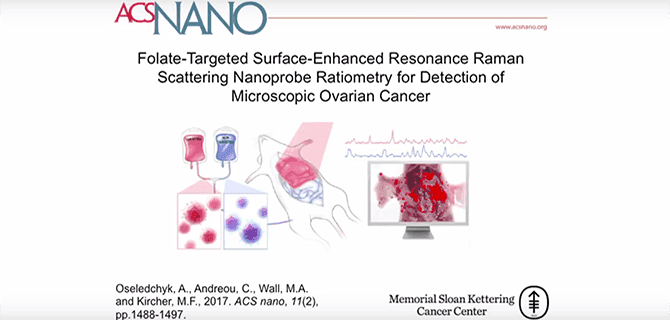Ovarian cancer presents some special challenges to health care professionals. It is difficult to detect early and hard to excise entirely through surgery, in part because it spreads through microlesions that are too small for a surgeon to see. Doctors face a choice between removing too much healthy tissue, or failing to remove all of […]

Ovarian cancer presents some special challenges to health care professionals. It is difficult to detect early and hard to excise entirely through surgery, in part because it spreads through microlesions that are too small for a surgeon to see. Doctors face a choice between removing too much healthy tissue, or failing to remove all of the cancerous cells. But in the future, surgeons could use imaging with Raman scattering nanoparticles to make sure they remove all cancerous cells.
In this video, Anton Oseledchyk, Chrysafis Andreou, and Moritz F. Kircher present a perspective on their recent research. Their work deals with a ratiometric approach using two spectrally distinct nanoparticle types to detect microscopic ovarian cancer in a mouse model.

